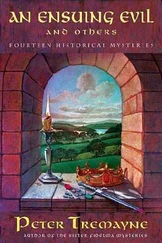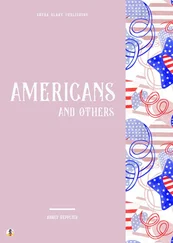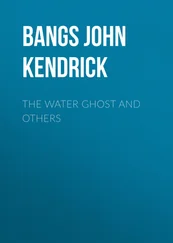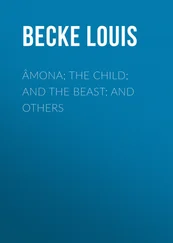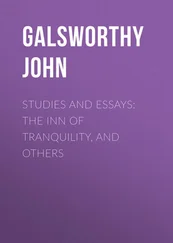Dana Spiotta - Innocents and Others
Здесь есть возможность читать онлайн «Dana Spiotta - Innocents and Others» весь текст электронной книги совершенно бесплатно (целиком полную версию без сокращений). В некоторых случаях можно слушать аудио, скачать через торрент в формате fb2 и присутствует краткое содержание. Год выпуска: 2016, Издательство: Scribner, Жанр: Современная проза, на английском языке. Описание произведения, (предисловие) а так же отзывы посетителей доступны на портале библиотеки ЛибКат.
- Название:Innocents and Others
- Автор:
- Издательство:Scribner
- Жанр:
- Год:2016
- ISBN:нет данных
- Рейтинг книги:5 / 5. Голосов: 1
-
Избранное:Добавить в избранное
- Отзывы:
-
Ваша оценка:
- 100
- 1
- 2
- 3
- 4
- 5
Innocents and Others: краткое содержание, описание и аннотация
Предлагаем к чтению аннотацию, описание, краткое содержание или предисловие (зависит от того, что написал сам автор книги «Innocents and Others»). Если вы не нашли необходимую информацию о книге — напишите в комментариях, мы постараемся отыскать её.
Innocents and Others — читать онлайн бесплатно полную книгу (весь текст) целиком
Ниже представлен текст книги, разбитый по страницам. Система сохранения места последней прочитанной страницы, позволяет с удобством читать онлайн бесплатно книгу «Innocents and Others», без необходимости каждый раз заново искать на чём Вы остановились. Поставьте закладку, и сможете в любой момент перейти на страницу, на которой закончили чтение.
Интервал:
Закладка:
Meadow was determined, and tonight was a chance to see Eustache’s only other film “on the big screen,” which was like the final verdict.
“Oh my god, but it is Saturday,” I said. She shrugged. “Can’t we be dumb tonight? I think Jean Eustache is a genius, but do we have to see genius films all the time?”
“Not all the time,” she said. “Just tonight.”
“I just want to get stoned and see something,” I said. “Something with jokes.”
We went to My Little Loves , which was, as it turned out, great. And it was in color and shorter than his other film. Then we got stoned, blowing smoke out the window of her room, and watched Monty Python . That was our compromise. Usually I did what Meadow liked and I was better for it, I think. She wanted to challenge the very idea of what films were or could be. She was always questioning everything. She wanted to challenge herself and the audience. But I was different, kind of lazy maybe. Flabby in every way. It only emerged slowly, and in contrast to Meadow, what I wanted from movies. I didn’t want to change everything. I didn’t want to challenge in dramatic formal ways. I watched a bad sitcom, and I thought, what would make this good? What would make this really funny? I saw a comedy that I liked, and I imagined what my version of that would be. A silly teenage comedy with girls as the main characters instead of boys. From a girl’s point of view, but just as raunchy and silly. That seemed radical to me. That’s what I wanted to make. I wanted seduction, not challenge. Or maybe I wanted to smuggle the challenge in a little, not subvert the whole form. Meadow and I were very different, but it was Meadow who made me see that I could — and should — make films. She did it, so I did it. And if we disagreed, had different ideas about the kinds of films worth making, it made us both all the better. I wouldn’t have become a filmmaker, I think, if it wasn’t for Hosney’s class and Meadow’s friendship. If it wasn’t for them, I would have become a Tarzana housewife who cracks a lot of silly jokes after a few glasses of white wine on girls’ night out. Nothing wrong with that, really, that’s my audience, my people. But now they have something to watch at the movies. Meadow put me in that direction, there is no doubt about it, and that brought me to the Tisch School and all that followed. I still think about what Meadow would think of every film I make and it pulls me to take more risks, find the edge of my jokes. It is part of how I view the world, no matter what.
Now I suppose it is time for some revelations about Meadow Mori, which I think should be obvious to everyone, and not revelations at all. Meadow’s “affair” with Orson Welles: she loves his movies and loves him. Did she live with him for a year or even meet him? No, she did not. If you read her essay carefully, the clues are all there, at least for Welles nerds. (Wrong house, wrong date of death, Stagecoach not City Lights , etc.) Meadow was creating what she called a fabule, a wish-story about herself, half dream and half fact. I know Meadow, and I alone seem able to read her perfectly. Meadow is playful, and she tells her own truth in her own way — you just have to yield to her version of the world to see how it all fits together, surrender to her possibilities. In a sense, she is the lover of Welles. Welles the great confidence artist, the prevaricator, the big fake who tells you he is manipulating you and that makes the magic all the more magical. Sleight of hand, she is all of that. She would say film is an art form built on an illusion. Static images shown quickly create the illusion of movement. All of it is a magic trick to Meadow, and that is part of what makes it so miraculous and beautiful: it isn’t real life. She didn’t ever meet Welles, but she loved him, the idea of him, completely. When she graduated from high school, she moved to New York to go to college just like I did. She deferred a year, rented a huge studio in a discarded and unused factory in Gloversville to make movies on her own, and when she finally tried to attend the next fall she didn’t last long in the program — she wanted to invent her own way. She — and we — created a kind of film camp in the summer of my freshman year. She got the idea from Nicholas Ray’s film commune in Binghamton, New York. [ Ed’s note: Nicholas Ray made a documentary with his students called We Can’t Go Home Again, which you can find here and streaming on Netflix. ] That was our only collaboration after high school.
As for this rumor that Meadow and I had a falling-out, we did not. The truth is much less dramatic. We slowly grew apart over the years, but she is still my oldest friend.
Finally, why did she quit making films? I don’t really know. Meadow stopped making films for her own private reasons. She had an accident in 1999 that I think had something to do with it. She stepped back, and now she prefers to teach film at a college in Albany and live a very modest life. I respect her choices. But I miss her work and I miss her.
I will close with what Meadow once told me about being an artist. It is partly a confidence game. And partly magic. But to make something you also need to be a gleaner. What is a gleaner? Well, it is a nice word for a thief, except you take what no one wants. Not just unusual ideas or things. You look closely at the familiar to discover what everyone else overlooks or ignores or discards.
— Carrie Wexler 1/15/15
Carrie Wexler was born in Los Angeles in 1966. She has directed six feature films including Girl School (1997); WACs (2001); Lindy’s Last Chance (2003); Making It (2008); We Are the Ones Our Parents Warned Us About (2011); A Baby! (2014). Her films have won great acclaim, including a Writers Guild of America award for Best Original Screenplay and two Golden Globe nominations for Best Motion Picture (Musical or Comedy).
Related links
Carrie Wexler, A Conversation with Mira Shirlihan: Number 8
Meadow Mori, How I Began: Installment Number 32, 2014
Meadow Mori interview, Sound on Sound, June 1999
comments are closed
CARRIE TELLS THE TRUTH
Everything Carrie said publicly in her essay about Meadow was true, but she also knew much more about Meadow’s breakdown than she said. Was that the right word for it? She would never say that to anyone else, but that was it, a breakdown. And it didn’t start with the accident, it started with Sarah Mills and the film they tried to make about her back in 2001. Meadow came up with the idea as a way to exonerate her (exonerate Sarah, and in a weird way, exonerate Meadow). But it didn’t work out that way. Carrie had called Meadow after a very hard article was published in New York magazine. It was titled “Handmaiden to Monsters.” It was about Children of the Disappeared. Meadow was interviewed, but her discussion of her own film was offset by comments from Argentinean survivors — most of whom hadn’t seen the film but had heard about it. Meadow’s subtle, uncomfortable film was “a defense of genocide.” Why didn’t she include footage of the survivors, the few who escaped death in the cleansings? Or the families holding up pictures of the disappeared? Their agony was left out of this “bizarre” film. “I am interested in the perpetrators, not the victims. I want the audience to see the perpetrators as complex humans, to see that we are not all that different from the perpetrators. Not to let them off the hook, but to put us all on the hook.” But under her photo (black and white, Meadow’s long legs in jeans, her motorcycle boots on the table in the foreground making her look insolent and almost blasé at her “film factory” upstate) the caption read, “I am interested in the perpetrators, not the victims.” It was a creepy article that seemed to admire and revile Meadow for exactly the wrong reasons: here is this hot, privileged, brilliant woman, and don’t we sort of hate her and enjoy hearing people say she’s bad? The message being, who does this woman think she is? After Carrie read it, she called and left messages for Meadow at her apartment in Washington Heights and in Gloversville. “Hey, I need to see you soon. Did I mention I am pregnant? Call me back.” Finally Meadow called her back and they agreed to meet at a restaurant near Carrie in Brooklyn.
Читать дальшеИнтервал:
Закладка:
Похожие книги на «Innocents and Others»
Представляем Вашему вниманию похожие книги на «Innocents and Others» списком для выбора. Мы отобрали схожую по названию и смыслу литературу в надежде предоставить читателям больше вариантов отыскать новые, интересные, ещё непрочитанные произведения.
Обсуждение, отзывы о книге «Innocents and Others» и просто собственные мнения читателей. Оставьте ваши комментарии, напишите, что Вы думаете о произведении, его смысле или главных героях. Укажите что конкретно понравилось, а что нет, и почему Вы так считаете.





